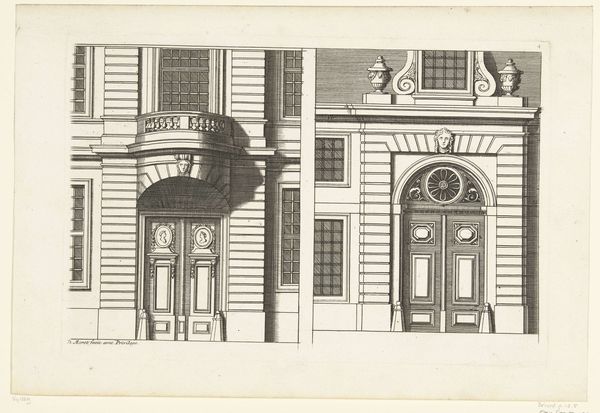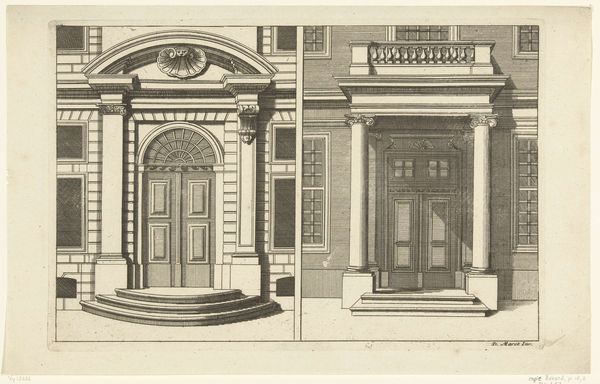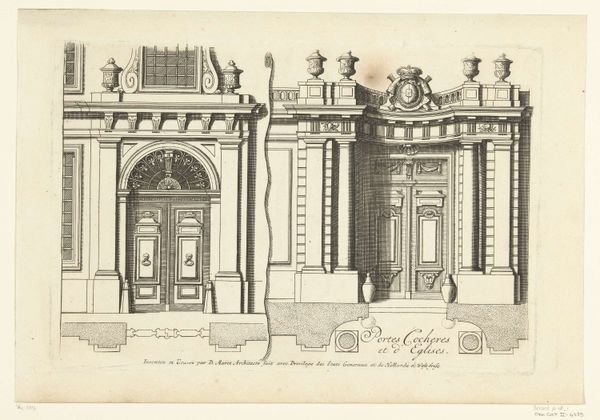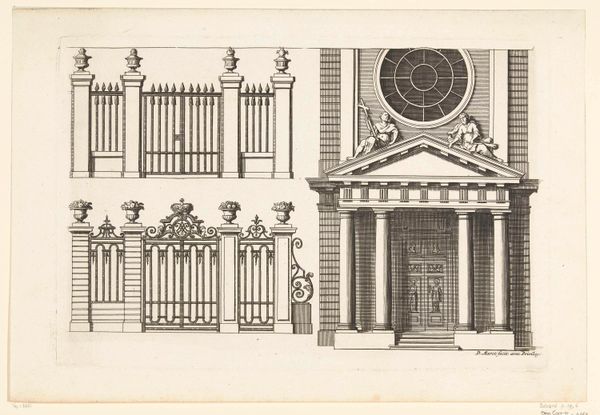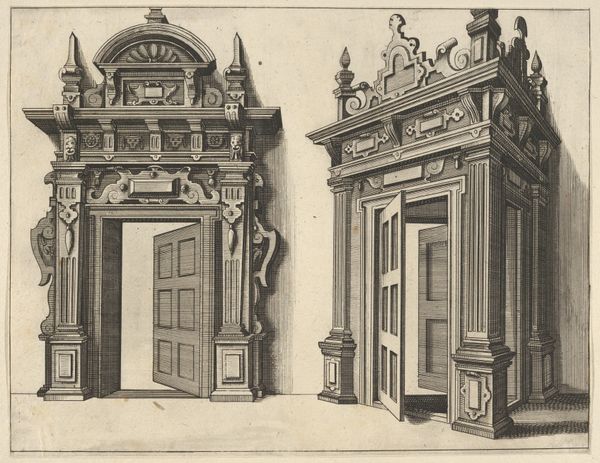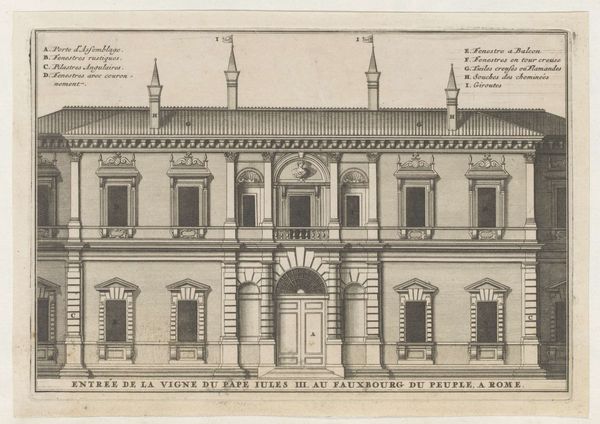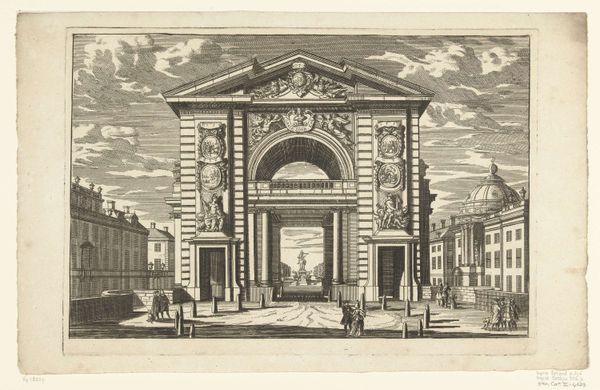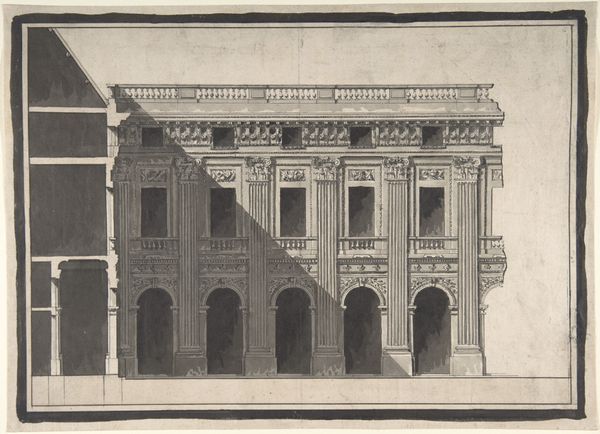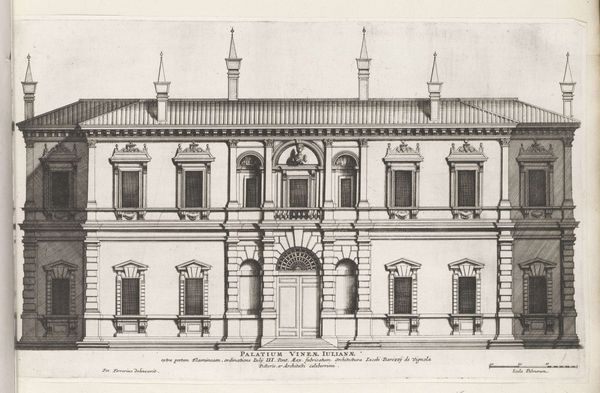
drawing, ink, engraving, architecture
#
drawing
#
baroque
#
ink
#
cityscape
#
engraving
#
architecture
Dimensions: height 186 mm, width 277 mm
Copyright: Rijks Museum: Open Domain
Curator: What immediately strikes me about this drawing is its stillness. The precision of the lines creates a sense of almost frozen grandeur. Editor: I agree, there’s a potent calm. We're viewing a composite artwork created in ink and engraving on paper. The Rijksmuseum houses this piece, entitled "Portico van kerk en ingang van landhuis," attributed to Daniël (I) Marot, likely created between 1673 and 1752. Its baroque style reveals something deeper than just artistic preferences. Curator: For sure. Looking closer at the architectural elements—the columns, statues, arched doorways—I see a potent statement about power and privilege in Dutch society. We see not just the church, but also the entrance to what clearly reads as the landowner’s property right beside it, almost conjoined as a demonstration of worldly and religious authority, not to say they don't oppose, rather operate alongside. Editor: Exactly! The church façade evokes a certain solemnity. The statuary flanking the entrance points to traditional virtue and authority—perhaps a statement reinforcing the legitimacy of the established order. What I find so curious is the shared door. What did the choice of putting these two institutions so intimately close mean back in that period? Curator: I see your point. The choice to showcase the entrance of a private landhuis together is no accident—likely it was created to signal social importance and cultural refinement within a deeply hierarchical system. Did the landowner seek blessings from the church? A social pact that benefited them mutually? Editor: The use of visual cues like clean lines and symmetrical layouts—popular in baroque depictions of structures—suggest that social control went through imposing images such as these. But, despite the cold, detached presentation, perhaps a sense of yearning remains… the doorway suggesting possibility beyond what structures impose. Curator: Definitely! It leaves us to reconsider social mobility during that timeframe in relation to art—wondering, who benefits from it, how and why. Thanks for the enlightening analysis of that subtle touch of symbolism. Editor: And thank you for connecting the visual details to a much richer historical and social reality! It gives much food for thought on how art reflected not just cultural aspiration but societal restrictions.
Comments
No comments
Be the first to comment and join the conversation on the ultimate creative platform.
